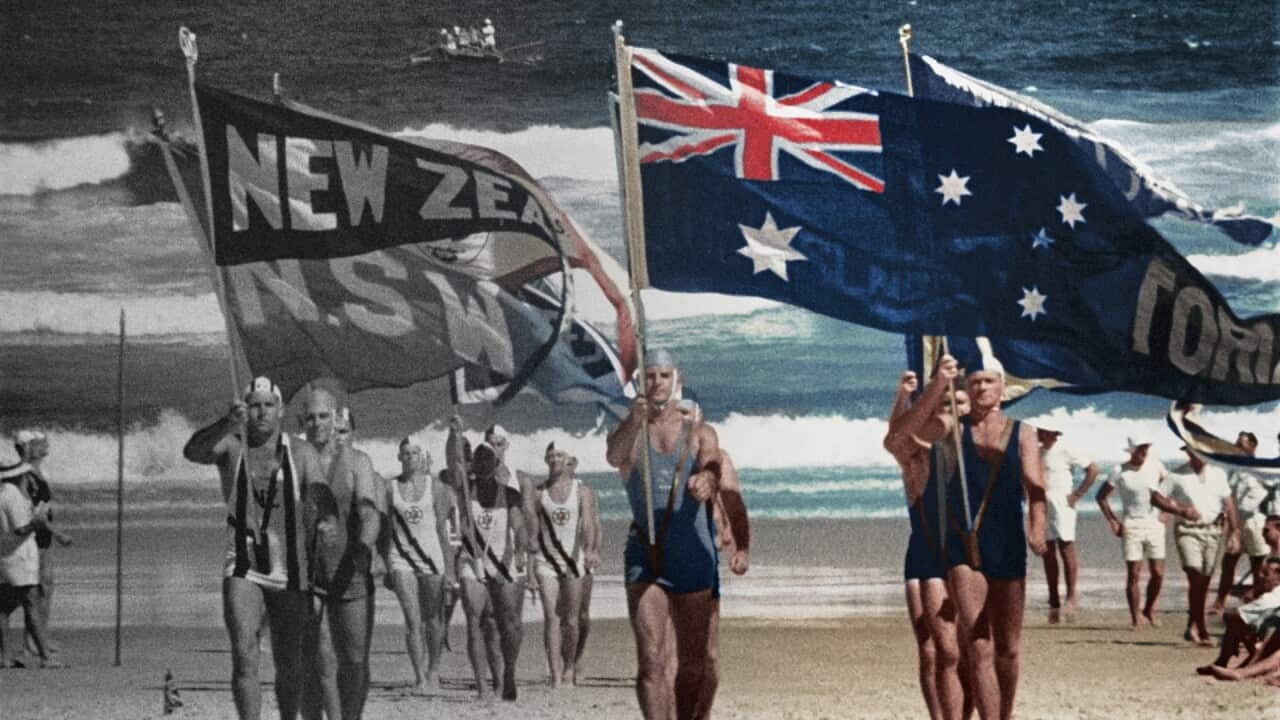It’s fair to say we’re a nation that prides itself on loving sport, even when the other sides aren’t playing fair. (We, of course, are above reproach.) In Australia In Colour, some of our most seminal moments of competition are brought to new life – and they reveal a lot about who we were and how we became who we are.
The Jack Johnson bout opened a racial conversation
When African-American boxer Jack Johnson came to Rushcutters Bay in 1908 to fight Canadian pugilist Tommy Burns for the World Heavyweight Boxing Championship, . Not merely because the American absolutely dominated his foe across 14 rounds, shocking roughly 20,000 onlookers who were mostly betting he was going to lose. Not merely because Johnson became the first black man to hold the Heavyweight Championship of the World. This fight rattled the smug convictions of racial superiority that had characterised Australian media coverage in the lead-up, and also gave many young Aboriginal men a new hero – and a new path to fortune and glory in the ring.
The first Aussie Rules caught on film shows how the game has changed
You might not know it these days, but the Carlton Football Club was once a force to be reckoned with. And the South Melbourne Football Club wasn’t even in Sydney! The 1909 Grand Final saw the Blues and the Swans Bloods face off in a clash that could’ve seen Carlton rack up a fourth-straight flag. It wasn’t to be though, with South Melbourne ekeing our their first VFL premiership victory by a mere two points.
Only 10 minutes of footage exists of this historic match, but what’s there is a true window into the past. For starters, the crowd are all in fancy hats instead of beanies. And the players’ shorts are more like what you’d saw teenagers wearing circa 2001. On field, you’ll see place kicks, slap passes and no sponsor logos. A different world…
Bodyline is even more brutal in colour
One of the worst chapters in cricketing history, the English team’s tactics at the 1932–33 Ashes series redefined the idea of “playing the man, not the ball”. Bodyline was developed as a way to put Bradman back in his box, but it was Bill Woodfull and Bert Oldfield who copped the worst of the on-pitch assaults. It’s bad enough to see those bowls smacking our boys in the chest and skull when it’s black and white, but watching the bone-breaking deliveries in colour is a far more visceral experience that will make you furious at Jardine’s touring side and their disgraceful tactics all over again.
The powers-that-be of the time were equally outraged – after the series, the MCC passed a resolution that “any form of bowling which is obviously a direct attack by the bowler upon the batsman would be an offence against the spirit of the game”.

Wait till you see this in colour: Bill Woodfull ducking to avoid a ball from Harold Larwood, 1932–33 Ashes Test series. Source: ESPN
Evonne Goolagong absolutely dominated tennis
Much like it’s weird to watch Bradman in more than monochrome (as a young man, that is), it’s incredible to witness what the live crowds would’ve seen as Evonne Goolagong faced off against Margaret Court at Wimbledon. It’s also interesting to see her comments on being an international Aboriginal sporting hero in that era – specifically how it was something more spoken about by others than thought about by her. Nevertheless, in a time when Indigenous people were still more patronised than lauded, she was crowned 1971’s Australian of the Year.
The Springboks tour proved sport is politics
Back when apartheid was still thriving as a policy in South Africa (also 1971), their national rugby team came Down Under on tour. This caused a major furore – with protests against the policy across the country, Queensland declared a state of emergency. More than 5000 people turned up with placards and slogans in Melbourne, and protestors tried to saw through the goal posts before the Sydney fixture. In the end, 700 people were arrested, eight Wallabies refused to play against the all-white team, and a proposed cricket tour by the South African side was cancelled.
Australia In Colour airs on Wednesday nights at 8:35pm on SBS. Stream the episodes at SBS On Demand after broadcast:
More on The Guide

How ‘Australia In Colour’ brought our nation’s past into the present





